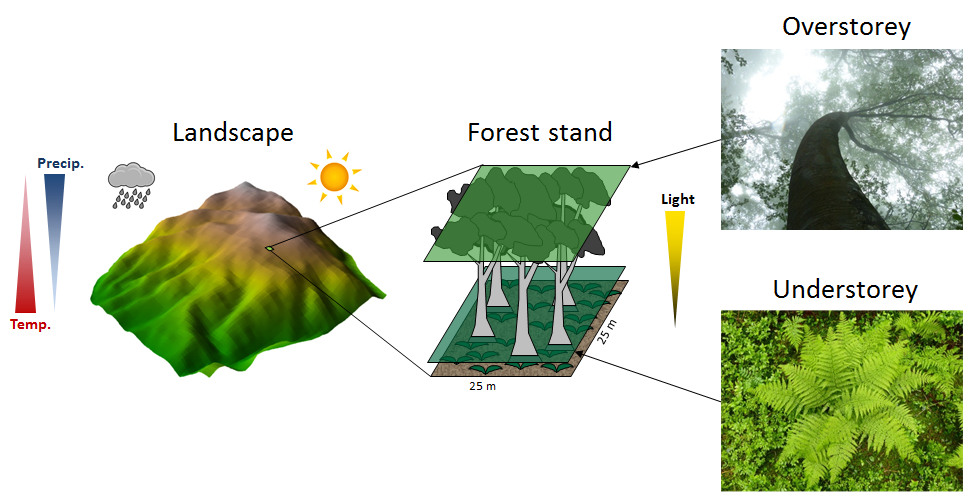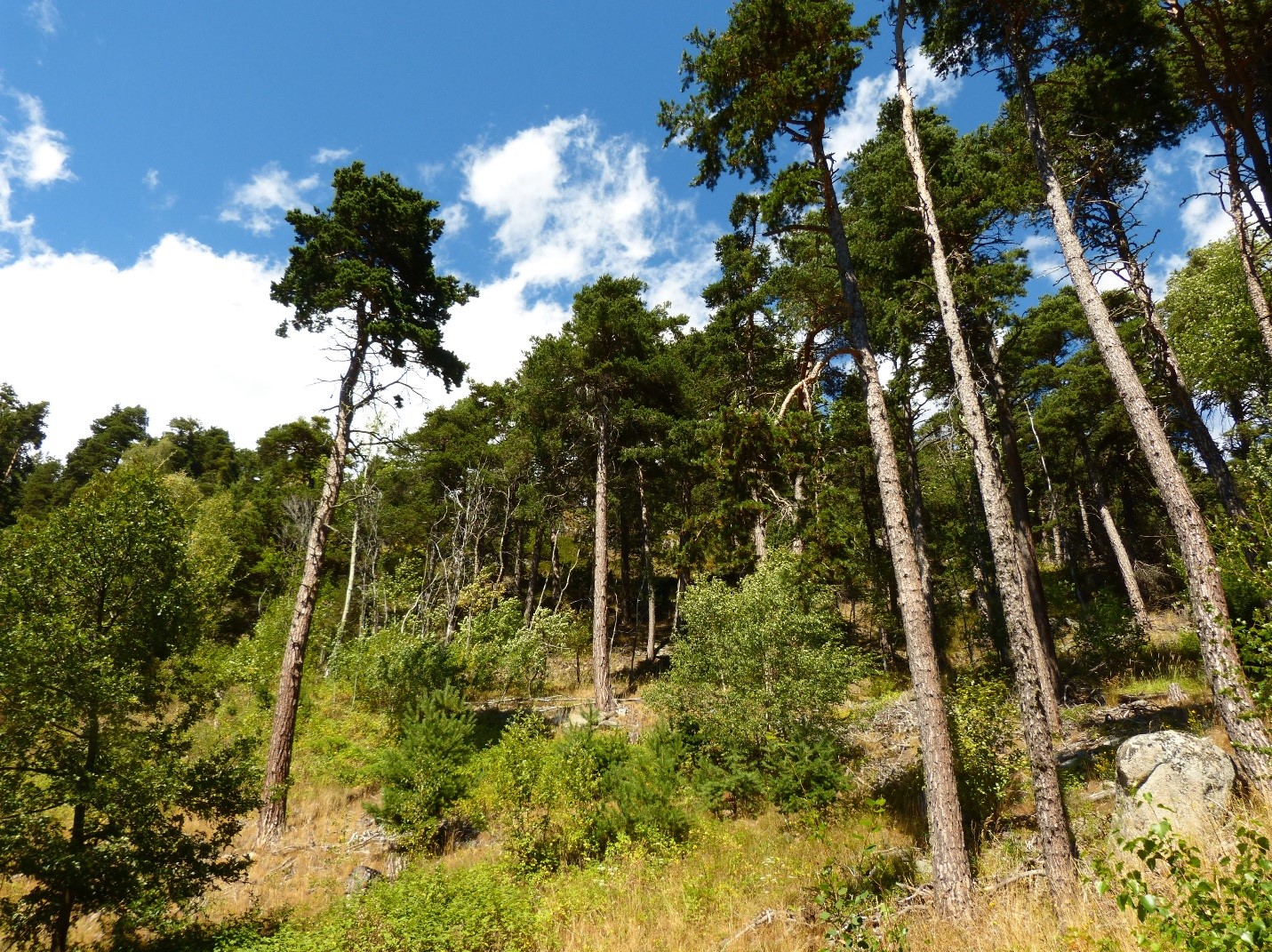The role of herbaceous understorey vegetation in forest landscape dynamics
Herbaceous understorey vegetation (e.g. grasses, ferns, herbs) can play an important role in forest dynamics as they compete with trees for light and soil water resources. However, the implications of this understorey-overstorey competition across large spatiotemporal scales remain poorly understood. Furthermore, most process-based forest models do not consider the herbaceous understorey, potentially missing an important component of forest stand dynamics. This project used a newly developed herbaceous module for the process-based forest landscape model (LandClim) to investigate the interaction between herbaceous understorey and trees across heterogeneous landscapes.
1. Light competition between overstorey and understorey vegetation
In most temperate forests, competition for light is the main interaction between the understorey and overstorey. On the one hand, understorey competes with juvenile trees for light and can thus act as a filter for tree establishment. On the other hand, shading from the overstorey determines understorey composition and biomass. We studied the long-term implications of this interaction for forest dynamics (external page Thrippleton et al. 2016). In particular we addressed the questions: (1) How strongly does the understorey delay forest succession? (2) Can strong understorey competition cause ‘arrested’ succession, where the ecosystem does not revert back to a closed-canopy forest? (3) How does the presence of a dense understorey affect the composition of tree species in the long term?
2. Water competition between trees and the herbaceous layer
Herbaceous understorey vegetation can be an efficient competitor for soil water resources, particularly in open, Mediterranean-type forests. Water competition will not only affect tree regeneration, but potentially reduce the growth and increase the mortality of mature trees. By improving the simulation of water competition between herbs, sapling and trees in LandClim, this project investigated the implications of increased water competition by the herbaceous layer on current and future forest landscape dynamics.
Funding
ETH Zurich
Status of the project
The project ran from September 2013 to February 2017.
Contact
Please contact Timothy Thrippleton, external page Rebecca Snell or Harald Bugmann for more information.


